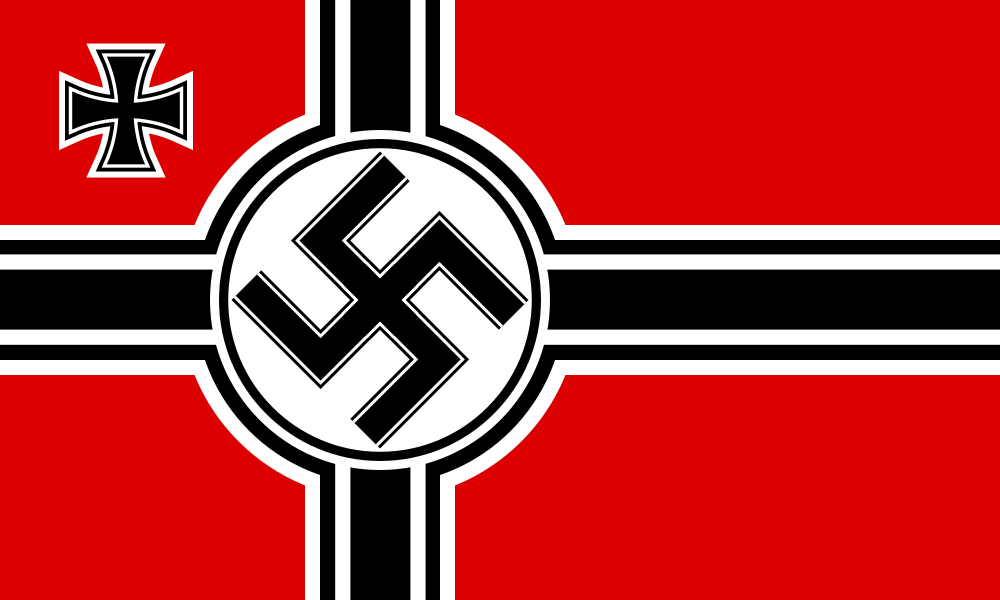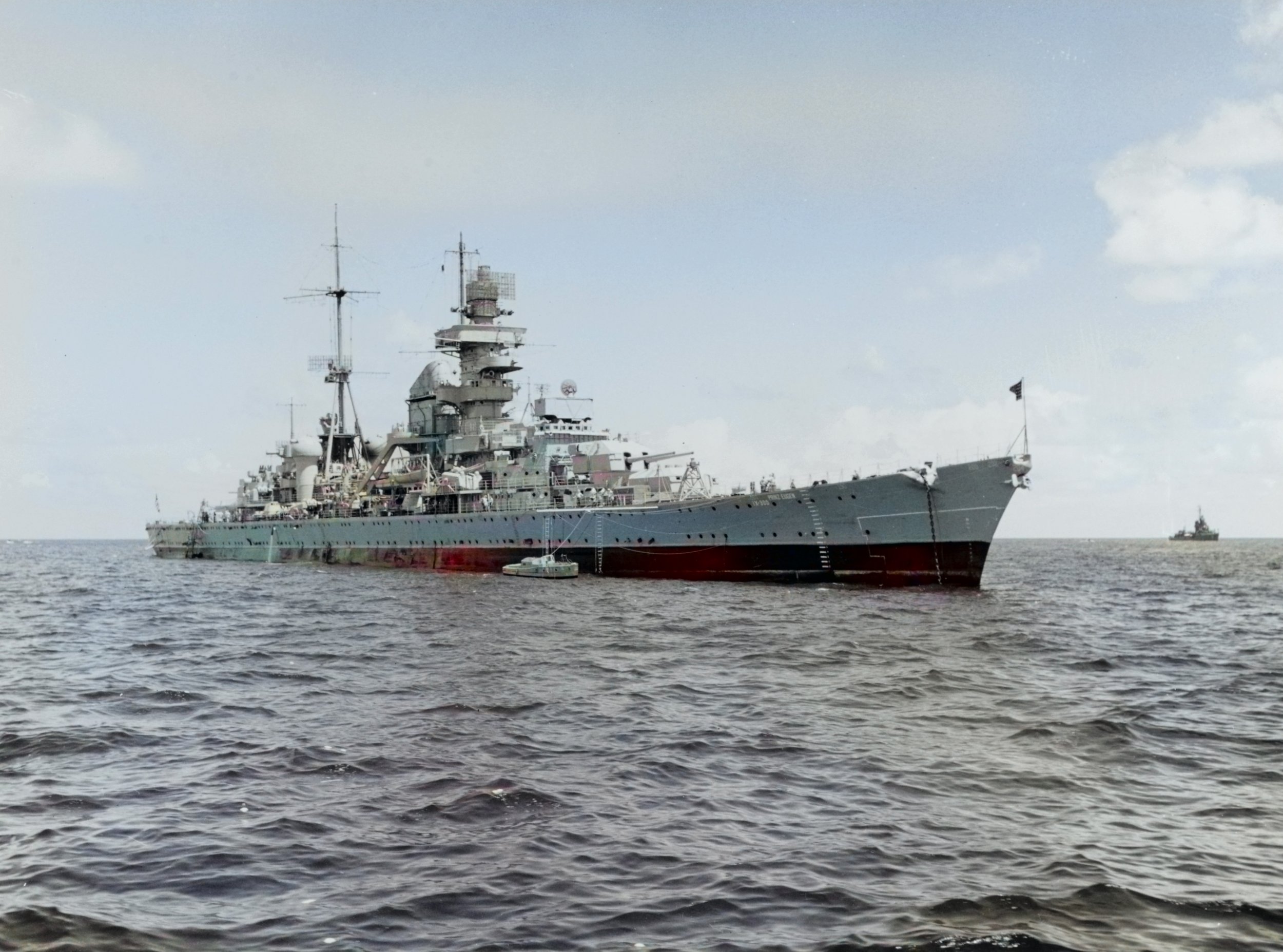Ships in Brief #003: KMS Prinz Eugen
The Prinz Eugen near the end of her life, flying US colors as she awaits nuclear testing in the Pacific
The third of the German Admiral Hipper Class heavy cruisers, the Prinz Eugen was built by Germaniawerft in Kiel, and laid down on 23 April of 1936. The naming of the ship was deliberately chosen, intended to honor the old Austro-Hungarian Navy, as well as to impress the friendly Hungarian leader Admiral Miklos Horthy, who had commanded the new cruiser’s namesake, a battleship, in the Great War. Her hull was completed and launched two years later, and the new cruiser was commissioned in August of 1940.
Sea trials were performed on the Baltic, and culminated with exercises with the brand new battleship Bismarck, with which the Prinz Eugen was to be paired for Exercise Rhine, a planned surface commerce raid set for the spring of 1941. Damage from striking a British mine set back the planned departure for this operation, but by mid May both ships were ready to sortie.
Prinz Eugen cast off in the evening of 18 May, 1941 from her berth at Gotenhafen, rendezvousing with Bismarck near Cape Arkona the next day before proceeding to Norway, and from there to the Denmark Straight. It was here, during their attempted breakout into the Atlantic, that the task force was engaged by the Royal Navy. In the ensuing battle on 24 May the battleship held fire for some time, leaving Prinz Eugen, mistaken by the British as the Bismarck, to return fire as she is bracked by shells from the HMS Hood. The first broadside from Prinz Eugen scored a minor hit on the British battlecruiser, repeating the feat with a subsequent salvo before switching targets to fire on the HMS Prince of Wales as Bismarck engages Hood. Shortly afterward the Hood is destroyed after a hit on her magazine, and in the ensuing chaos the Germans break off as the wounded Prince of Wales withdrew from the battle area.
Following the Battle of the Denmark Strait both German warships resumed their course for the open sea, but damage to Bismarck had left the battleship trailing oil and down at the bow. When a decision was made for the battleship to make for Occupied France for repairs, the task force commander, Admiral Gunther Lutjens, ordered Prinz Eugen to detach and attempt to raid commerce alone. This was accomplished under cover of bad weather, and Prinz Eugen moved to refuel before resuming her mission. In the end, the Prinz Eugen would be forced to make for France after engine failure, encountering no enemy ships before she put into Brest for repairs on 1 June. Bismarck, left on her own, had been sunk on 27 May.
After some time in Brest it was decided by OKM (Oberkommando der Marine, Kriegsmarine High Command) that due to constant RAF attacks on Brest all three German capital ships located there (Prinz Eugen along with the battleships Scharnhorst and Gneisenau) should be relocated back to German ports. This was to be accomplished via a risky operation to force the heavily defended English Channel, relying on heavy cover by the Luftwaffe. The three ships sortied from Brest just before midnight on 11 February, 1942, and after an eventful journey arrived in Germany, with the Prinz Eugen undamaged and both battleships damaged but intact. Subsequently she sailed to Norway, where a British submarine managed to blast her stern off with a torpedo hit, leaving the cruiser to limp back to Kiel, where she would remain until late October.
Following completion of her repairs, the cruiser would serve as a training vessel in the Baltic for a period, until in 1944 she was reassigned to provide naval gunnery support to the retreating Wehrmacht on the Eastern Front. Returning to rearm after one such mission she accidently rammed the light cruiser Leipzig in heavy fog, putting the smaller ship out of action for the duration of the war.
In January of 1945 the Prinz Eugen again returned to combat, supporting the defense of Konigsberg, but shortages of munitions severely hampered her mission count, as the Red Army captured Konigsberg, Danzig and Gotenhafen, among others. As the number of base facilities in German hands decreased rapidly, she was relocated first to Schweinemunde (where she narrowly survived an RAF raid) and then to Copenhagen, where she would remain until the end of the war, when she was taken into British custody following the German capitulation on 8 May, 1945.
After the war, the cruiser was one of only two major Kriegsmarine ships still in an operational condition, and she was turned over to the United States as a war prize. Designated USS Prinz Eugen, IX-300, the ship sailed to Boston, with a German crew operating her with a group of US Navy officers aboard to supervise the transfer. Following close examination of her armament and radar systems, the cruiser was designated as expendable, and allocated for nuclear weapons testing.
After surviving two nuclear blasts at a range of about one kilometer with only minor damage, the now badly irradiated hulk was towed to Kwajalein Atoll, where she was anchored and left in place, but a small leak made unrepairable due to the radioactive contamination threated to sink the ship in the shipping lane. An attempt was made to beach the cruiser, but she capsized and sank near the shore on 22 December, 1946. Her propellers remain above water to this day, and an operation by the US Navy was conducted in 2018 to pump fuel oil from her tanks in order to prevent ecological damage from a potential leak. As the radiation levels have declined, the ship has become a popular site with recreational divers.
Specifications: Admiral Hipper Class Aircraft Carrier - Prinz Eugen
Builder: Germaniawerft, Kiel
Operator: Kriegsmarine, United States Navy
Commissioned: August 1, 1940 (Kriegsmarine), January 5, 1946 (USN)
Decommissioned: May 7, 1945 (Kriegsmarine), August 29, 1946 (USN)
Lost: December 22, 1946
Length: 697 feet
Beam: 71 feet
Draft: 24 feet
Powerplant: 12x Wagner High Pressure Boilers powering 3x Blohm & Voss Geared Turbines
Armament: 8x 8’’ SKC34 Guns, 12x 4.1’’ SKC33 Guns, 12x 37mm AA Cannons, 8x 20mm AA Cannons, 12 Torpedo Tubes
Crew: 1,382
Commanding Officer: Kapitän zur See Helumth Brinkmann, (DKM, 1941-1942) Kapitän zur See Hans-Erich Voss (DKM, 1942-1942), Kapitän zur See Werner Erhardt (DKM, 1943-1944), Kapitän zur See Hans-Jurgen Reinicke (DKM, 1944-1945), Captain Arthur Graubart (USN, 1945-1946)


